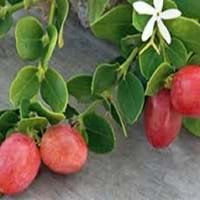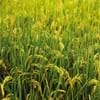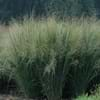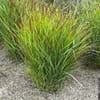Life Span
Annual
Perennial
Origin
Eastern Africa, Northern Africa, Southern Asia, Southeastern Asia
Central Asia, Southern Asia, Western Ghats, India
Types
Akia Beruin Red, Ofada Rice, Topaz
congesta, paucinervia
Habitat
Muddy habitat
Fertile bottom land, moist forests, Temperate Regions, Tropical Forests
USDA Hardiness Zone
8-15
Not Available
Sunset Zone
Not Available
Not Available
Habit
Clump-Forming
Upright/Erect
Minimum Height
Not Available
Minimum Width
Not Available
Flower Color
White
Pale White, White
Flower Color Modifier
Bicolor
Bicolor
Fruit Color
White
Purple, Black
Leaf Color in Spring
Green
Green
Leaf Color in Summer
Light Green
Green
Leaf Color in Fall
Green
Green
Leaf Color in Winter
Not Available
Light Green
Leaf Shape
Grass like
Oval
Plant Season
Summer, Fall
Spring, Summer, Fall
Sunlight
Full Sun
Full Sun, Partial Sun, Partial shade
Growth Rate
Very Fast
Medium
Type of Soil
Clay, Loam
Loam
The pH of Soil
Acidic, Neutral, Alkaline
Acidic, Neutral, Alkaline
Soil Drainage
Average
Well drained
Bloom Time
Not Available
Spring
Tolerances
Wet Site, Salt
Drought
Where to Plant?
Ground
Ground
How to Plant?
Seedlings, Transplanting
Seedlings, Stem Cutting
Plant Maintenance
Medium
Medium
Watering Requirements
Keep plant submerged in water
Keep the ground moist but not water-logged
In Summer
Ample Water
Lots of watering
In Spring
Lots of watering
Moderate
In Winter
Consistently
Average Water
Soil pH
Acidic, Neutral, Alkaline
Acidic, Neutral, Alkaline
Soil Type
Clay, Loam
Loam
Soil Drainage Capacity
Average
Well drained
Sun Exposure
Full Sun
Full Sun, Partial Sun, Partial shade
Pruning
No need to prune
Prune if you want to improve plant shape, Remove dead leaves
Fertilizers
Fertilize the soil before planting, Phosphorous, Potassium
Compost, fertilize in growing season
Pests and Diseases
Bacteria, Birds, fungus, Nematodes, Rats, Snails, Viruses
Aphids, Earwigs, Insects, Mildew, Red blotch, Rust, sawflies
Plant Tolerance
Salt, Wet Site
Dry soil, Heat And Humidity
Flowers
Insignificant
Insignificant
Flower Petal Number
Single
Single
Foliage Texture
Medium
Medium
Foliage Sheen
Matte
Matte
Attracts
Birds
Birds, Butterflies, Fruit Bats
Allergy
Not Available
Eczema, Mouth itching, Throat itching
Aesthetic Uses
Not Used For Aesthetic Purpose
Not Available
Beauty Benefits
Good for skin
good for lips, Remove blemishes
Environmental Uses
Air purification, Prevent Soil Erosion
Air purification, Food for animals, Food for birds, soil stabilisation
Medicinal Uses
Energy, High blood pressure, Skin Disorders, Swelling
Anemia, Diuretic, Potassium, Rich in Iron, Vitamin C
Part of Plant Used
Seeds
Fruits, Leaves
Other Uses
Starch, Used as a nutritious food item, Used As Food
Added to salads, Cosmetics, Culinary use, Used as a nutritious food item, Used As Food, Used for its medicinal properties
Used As Indoor Plant
No
No
Used As Outdoor Plant
Yes
Yes
Garden Design
Container, Dried Flower/Everlasting, Edible, Herb / Vegetable, Houseplant, Tropical, Water Gardens
Edible, Fruit / Fruit Tree, Hedges
Botanical Name
ORYZA
Carissa carandas
Common Name
Rice
Black Currant
In Hindi
चावल
करोंदा, कालि मैना
In Spanish
arroz
karondas
In Portuguese
arroz
karondas
Phylum
Magnoliophyta
Magnoliophyta
Class
Liliopsida
Magnoliopsida
Order
Cyperales
Gentianales
Family
Poaceae
Apocynaceae
Clade
Not Available
Angiosperms, Asterids, Eudicots
Tribe
Not Available
Not Available
Subfamily
Not Available
Not Available
Number of Species
Not Available
Not Available
Importance of Rice Plant and Karonda
Want to have the most appropriate plant for your garden? You might want to know the importance of Rice Plant and Karonda. Basically, these two plants vary in many aspects. Compare Rice Plant and Karonda as they differ in many characteristics such as their life, care, benefits, facts, etc. Every gardener must at least have the slightest clue about the plants he wants to plant in his garden. Compare their benefits, which differ in many ways like facts and uses. The medicinal use of Rice Plant is Energy, High blood pressure, Skin Disorders and Swelling whereas of Karonda is Anemia, Diuretic, Potassium, Rich in Iron and Vitamin C. Rice Plant has beauty benefits as follows: Good for skin while Karonda has beauty benefits as follows: Good for skin.
Compare Facts of Rice Plant vs Karonda
How to choose the best garden plant for your garden depending upon its facts? Here garden plant comparison will help you to solve this query. Compare the facts of Rice Plant vs Karonda and know which one to choose. As garden plants have benefits and other uses, allergy is also a major drawback of plants for some people. Allergic reactions of Rice Plant are Not Available whereas of Karonda have Eczema, Mouth itching and Throat itching respectively. Having a fruit bearing plant in your garden can be a plus point of your garden. Rice Plant has no showy fruits and Karonda has no showy fruits. Also Rice Plant is not flowering and Karonda is not flowering . You can compare Rice Plant and Karonda facts and facts of other plants too.





